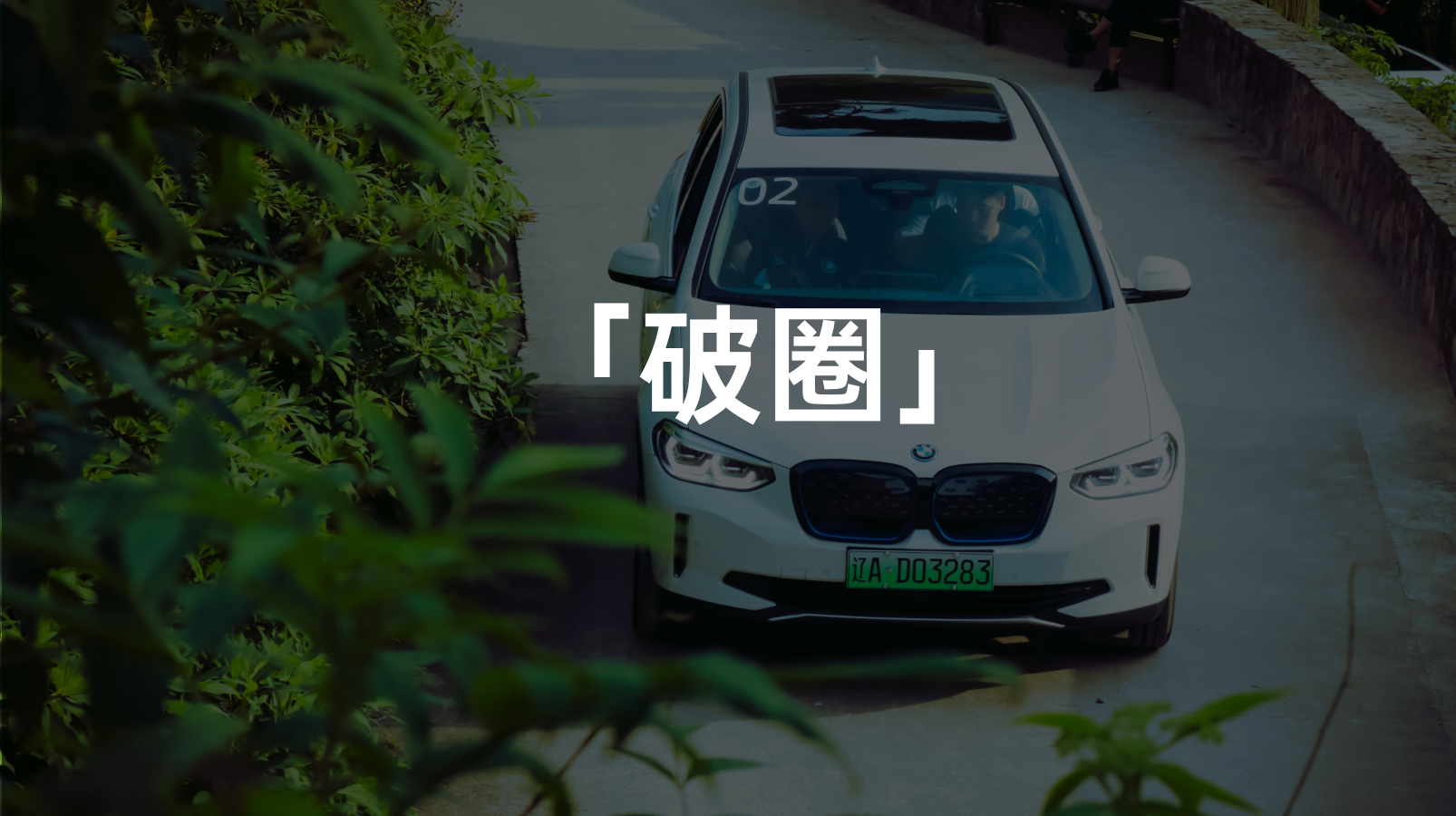It’s half past nine in the evening on June 25th, and I’m typing on the bed in a guest room of a village inn called “Yunshang Ping Tian”. Next door, my colleague is talking to someone. The rammed earth building, which is possibly older than my grandfather, doesn’t have great sound insulation despite modern renovation techniques. I seem to be hearing their conversation.
At the same time, accompanied by the sounds of various insects outside, the iX3 is supplying the missing electricity of the day’s journey from the national power grid at the foot of the mountain. Before talking about the protagonist iX3, let’s first recall the history of BMW i.
Entering
I believe many people have heard of BMW’s two very famous models, i3 and i8. The i3, as the iconic model of BMW’s exploration in the field of pure electric vehicles, was introduced to the market in 2011.
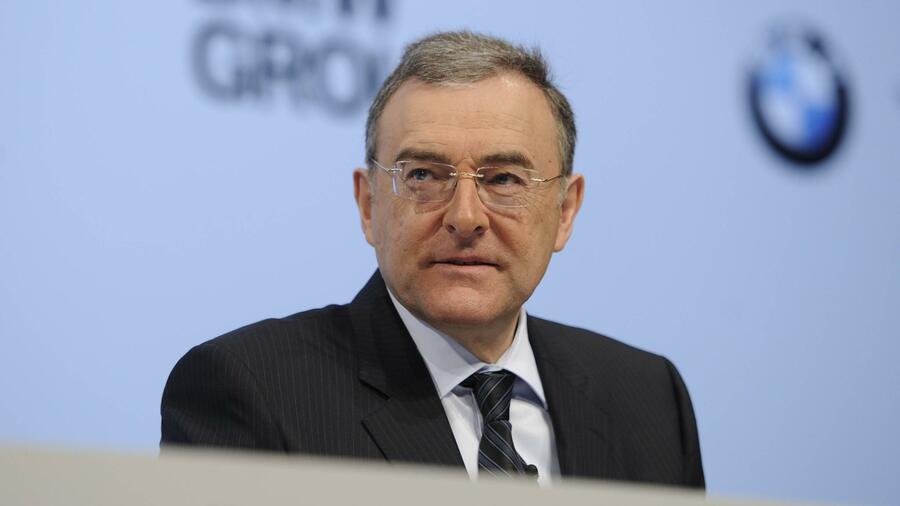
_ (Photo: imago / Sven Simon) _
BMW’s exploration in the field of pure electric vehicles dates back to 2007. Norbert Reithofer, the then-CEO of BMW, did not become complacent in the face of BMW’s outstanding performance in the field of fuel vehicles, but instead proactively adjusted the overall strategy of BMW and invested in future technologies, including research on electric vehicles, besides sales targets. In September, Reithofer proposed specific projects for the adjustment.
Thus, “Project i” was born.
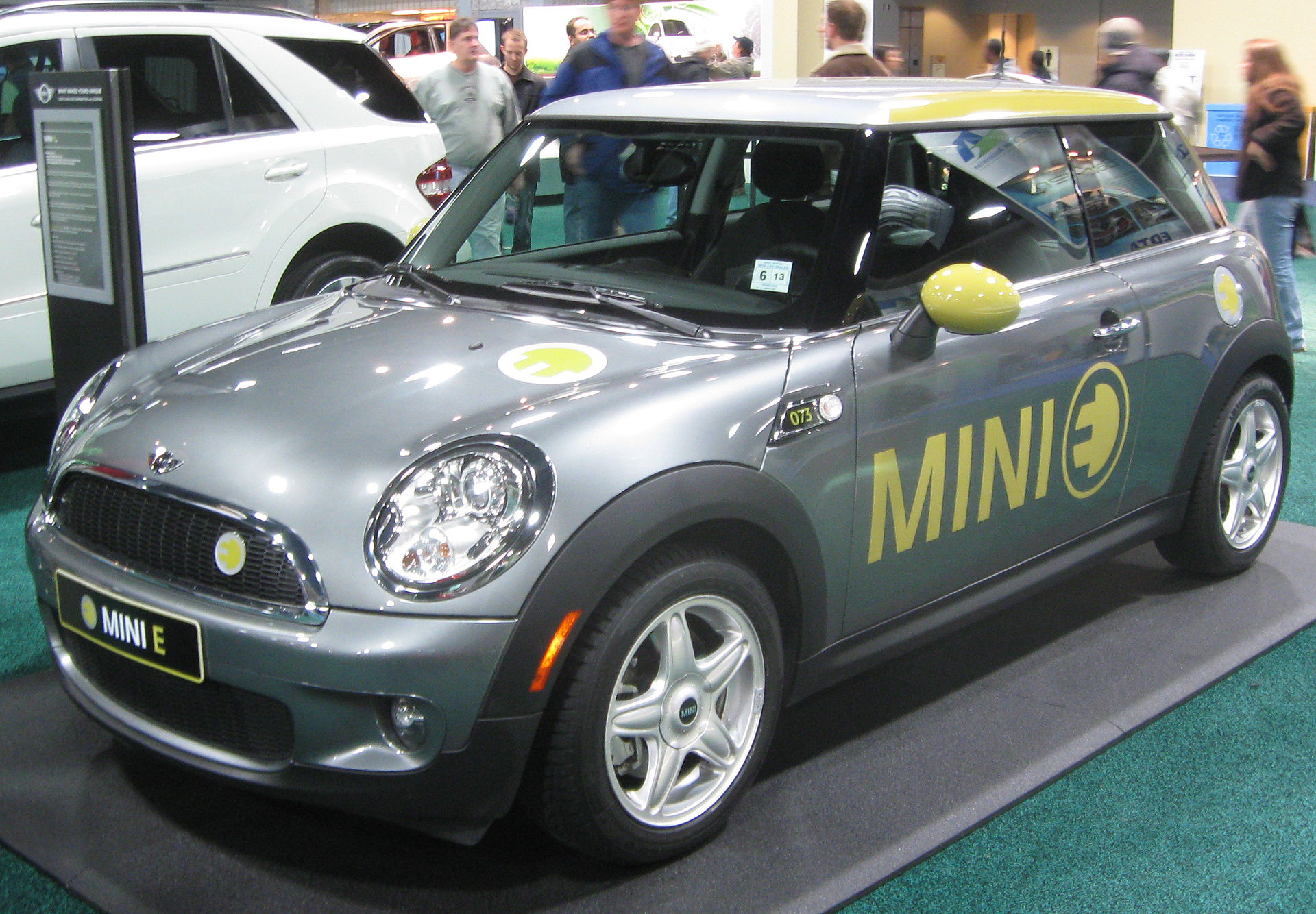
BMW carefully divided this plan into three phases. In the first phase, BMW cautiously selected the Mini Cooper model for transformation, and the new car “Mini E” debuted at the Los Angeles Auto Show in 2008. From 2009 to 2011, hundreds of Mini E cars were tested in the United States (leased to customers), Germany, the United Kingdom, France, China, and Japan. In 2008, when the project started, Tesla had just hired Martin Eberhard as CEO.
As people’s attitude towards electric vehicles was completely curious at the time, BMW not only verified the abilities of its electric vehicles with Mini E but also collected people’s opinions on modifications. Although the financial crisis in 2008 caused BMW’s revenue and profits to plummet, the progress of Project i continued with Reithofer’s support. In 2012, BMW delivered the “Active E” based on the first-generation 1-series E82, which was transformed and tested by customers who had participated in the Mini E test.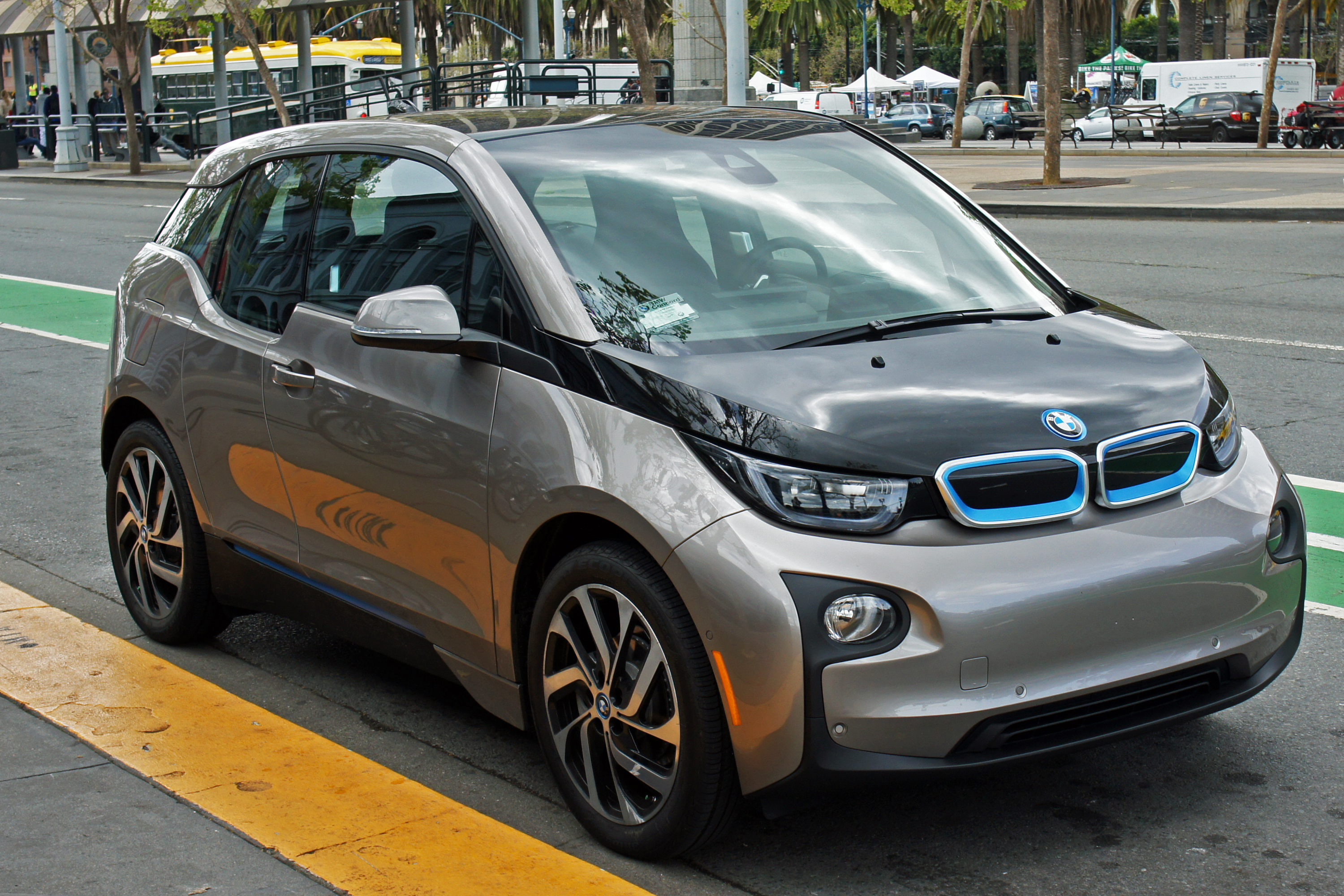
In the third stage, the familiar i3 and i8 were finally manufactured. The i3 made its debut at the 2011 International Motor Show Germany and started production and delivery in 2013. However, Mercedes-Benz’s EQ series and Audi’s e-tron series were officially launched in 2017. It was ranked third in global electric vehicle sales in 2014-2016, with a cumulative sales of over 165,000 units at the beginning of 2020, which is an impressive achievement. (BMW i3’s sales peaked at 11,024 units in 2015, but last year’s sales plummeted to 1,508 units.)
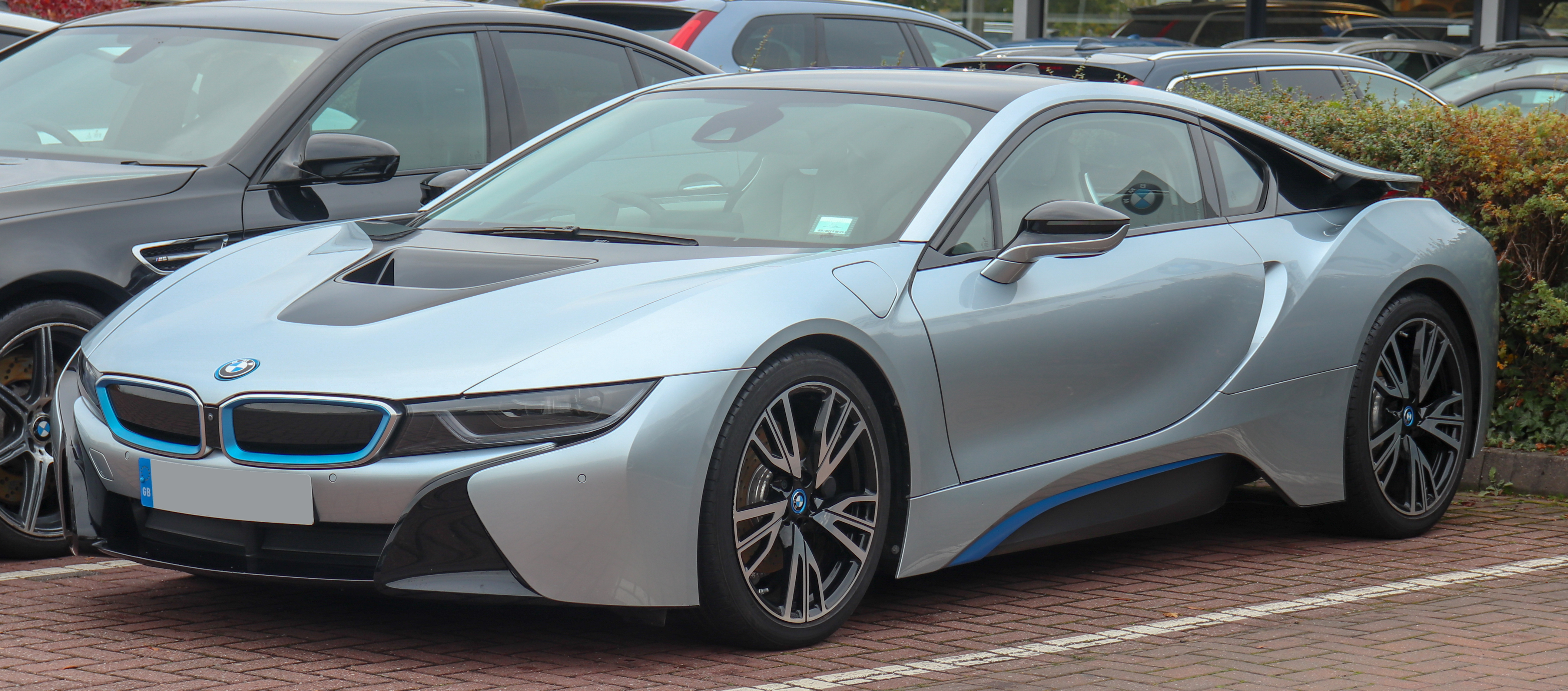
BMW’s electric supercar prototype, the i8, made its debut at the 2013 Frankfurt Motor Show and started delivery in 2014. By March 2020, more than 20,000 units had been sold.
However, these two pearls are gradually being forgotten against the backdrop of the “Electric Leap Forward” of global car companies. Although their forward-looking use of various technologies such as single-pedal mode and carbon fiber polymer has played a significant role in the development of electric vehicles, BMW decided to stop production of the i3 this year and eliminate it from the market in 2022. The i8 was already discontinued in April this year.
Trouble
At the time when the fuel market was booming, Reithofer was able to propose the “Number ONE Strategy” in 2007, which was determined to invest a huge amount of money in new power drives (including electric drives). This itself really has a very forward-looking vision.
In 2015, Reithofer, who had accumulated many honors during his tenure as CEO of BMW, stepped down. Of course, the 59-year-old Reithofer did not choose to retire, but rather broke the two-year wait-and-see period unethically and directly assumed the position of chairman of BMW’s supervisory board.
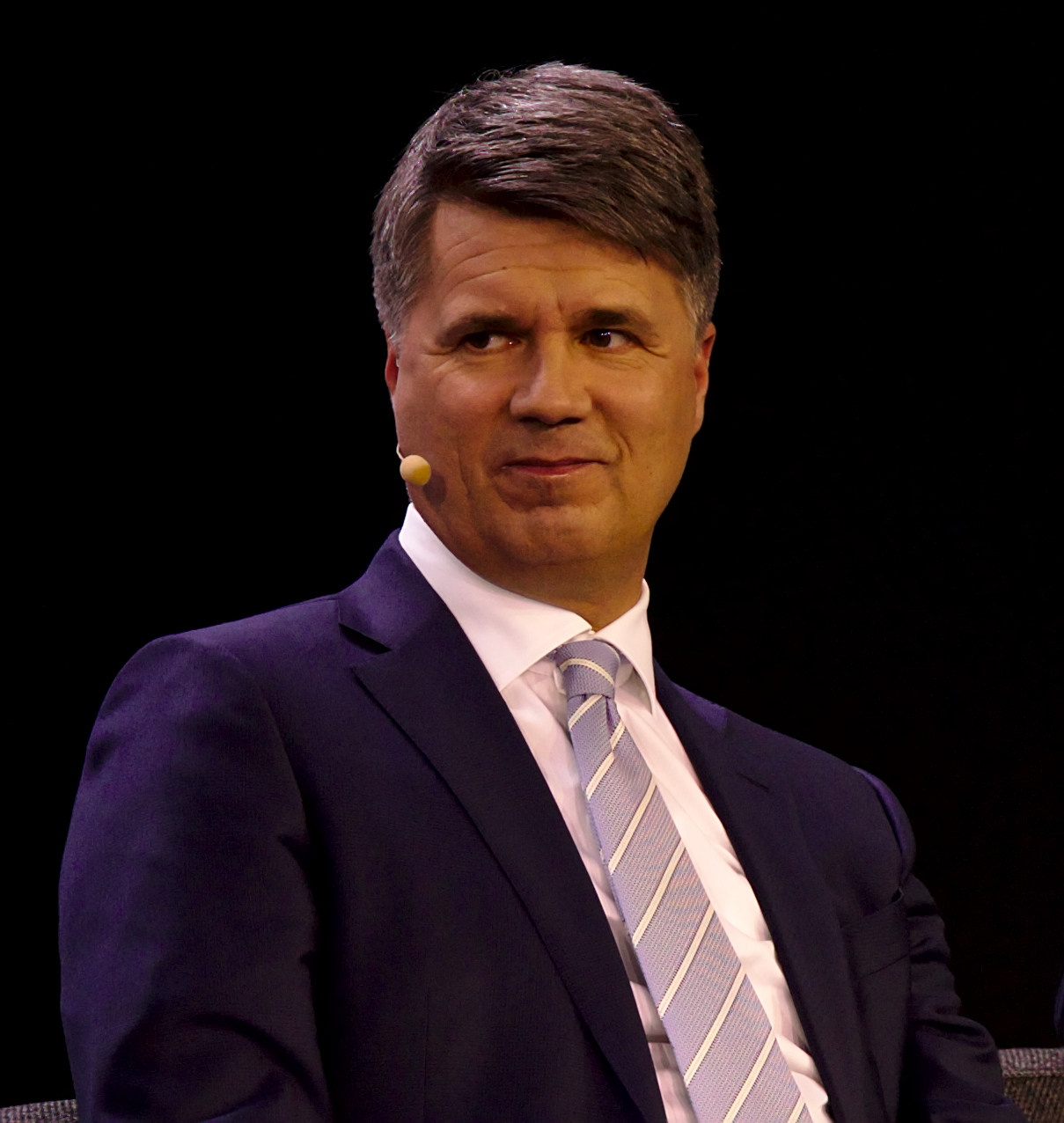 ## BMW’s Choice
## BMW’s Choice
In the same year, Diess lost the competition for BMW CEO to Harald Krüger. One of the reasons was that historically, BMW CEOs were usually selected from those who had led the production sector, such as the previous CEO, Reithofer, or the one before that, Helmut Panke. Krüger was in charge of production, while Diess was responsible for research and development. Additionally, BMW’s supervisory board, which is the actual decision maker, was more interested in seeing the younger Krüger (born in 1965) become the CEO rather than Diess, who was only two years younger than Reithofer (born in 1958).
Krüger worked until 2019 but was not re-elected. In the shareholder meeting in May of that year, Krüger was also criticized by major shareholders. During these four years, in which new forces in China and the US were rising up one after another, Krüger did not embody the spirit of “exploration” that existed during Reithofer’s tenure, and the department he led did not make much progress in the pure electric field: they only launched 7 plug-in hybrid models, and didn’t even release a single pure electric model!
Meanwhile, the BMW i department, which was responsible for creating the i3 and i8, was eager to make progress but stagnated due to lack of opportunities. In 2016, the leaders of the i8 project, Carsten Breitfeld, Dirk Abendroth, Henrik Wenders, and Benoit Jacob, were all poached by Future Mobility, a Chinese electric vehicle start-up, which is also known as Harmony Auto.
At the end of the year, Ulrich Kranz also left BMW and became the CTO of Faraday Future. Kranz was the head of the Project i project and was known as the “father of the i3 electric car”. A few days ago, he was even acquired by Apple.
BMW’s choice# Time has come to August 2019, Oliver Zipse took over BMW’s helm from Krüger. However, he faces a more severe situation because the sudden outbreak of COVID-19 has a global impact. In 2019, BMW achieved revenue of 104.2 billion Euros, an increase of 7.6% YoY, which is the first time BMW’s revenue has exceeded 100 billion Euros. However, the net profit was 5.022 billion Euros, down 28.9% YoY.
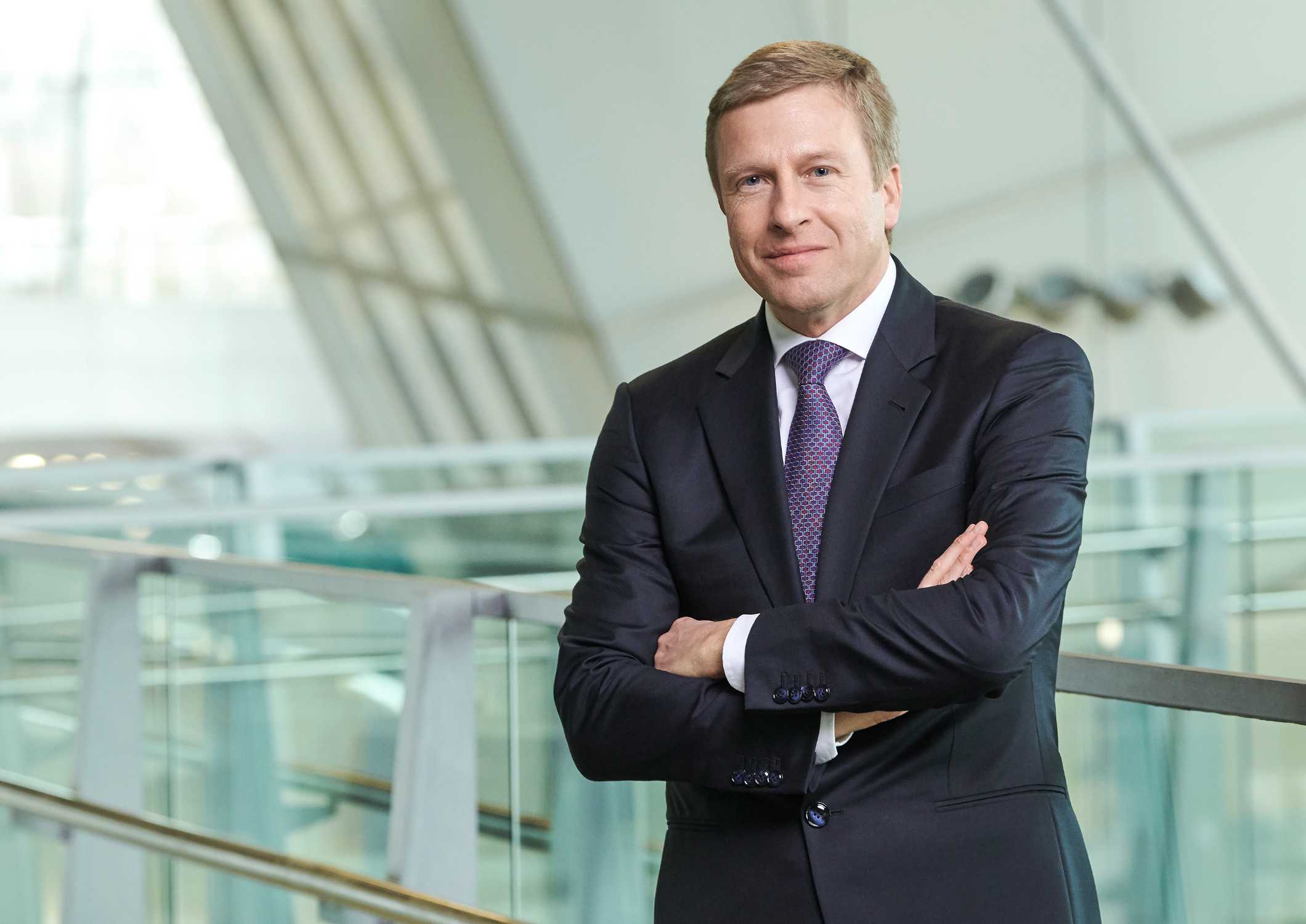
As of now, Zipse is still following Krüger’s strategy for electrification, which is “from oil to electricity.”
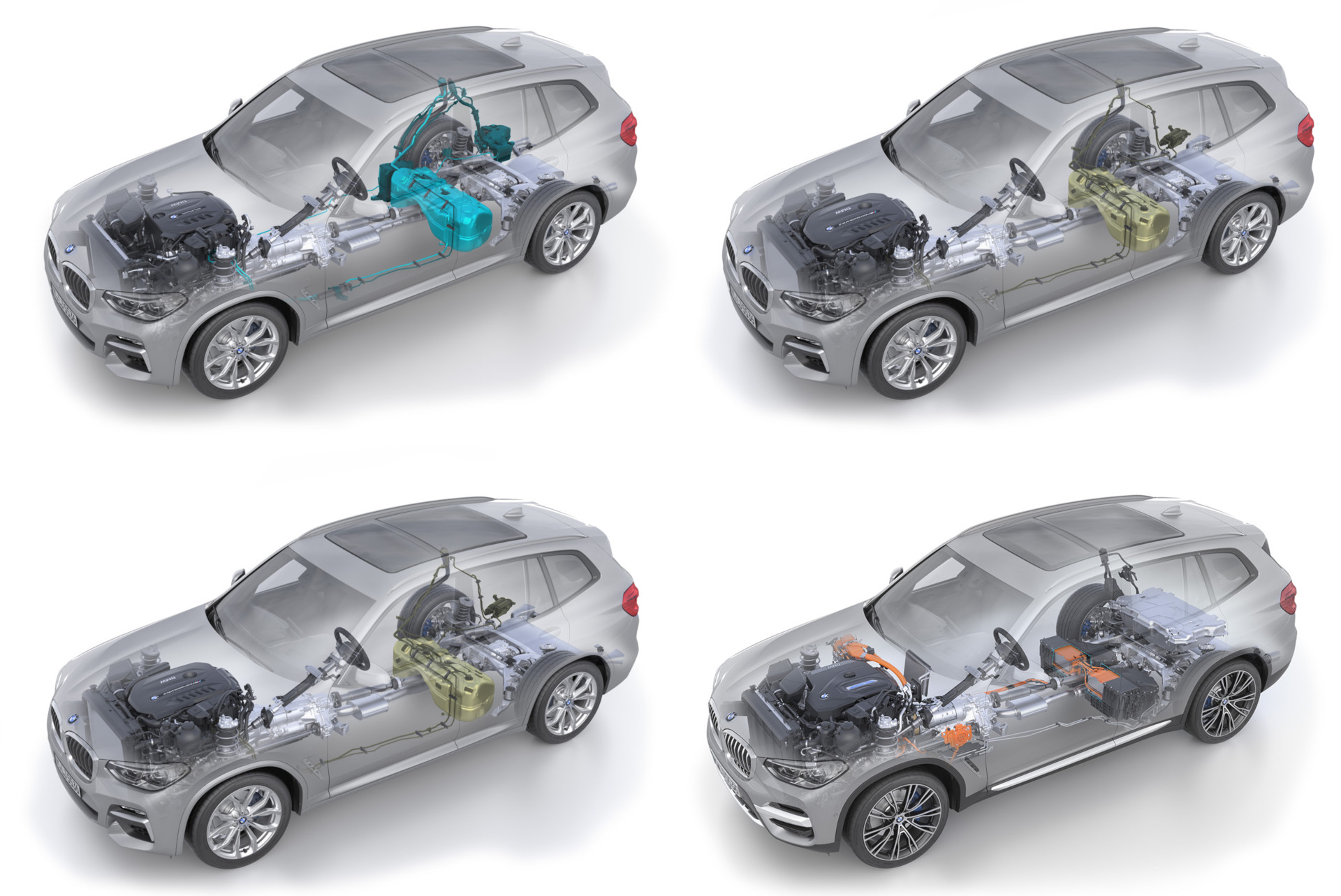
However, this kind of electrification is different from the former one. After the i3 and i8 projects, BMW found that the pure electric platform was too costly, and it was difficult to replicate it at low cost into the company’s models. Therefore, following the principle of cost savings, CLAR platform was designed as a flexible architecture compatible with ICE, PHEV, and BEV, and the fifth generation eDrive electric drive system was developed.
To quote Udo Haenle, BMW’s head of engineering technology, a new factory dedicated to electric cars would cost 1 billion Euros, while retrofitting existing factories to produce electric cars would only cost 3 million Euros. Moreover, BMW chooses this technological path because its brands and models are relatively single, and the cost of a pure electric platform is not sufficient to achieve large-scale amortization. In contrast, even with the high sales volume of Volkswagen, they still need to bring Ford onboard to further amortize the cost of the MEB platform.
Therefore, regardless of development or manufacturing, using the CLAR platform currently is the most beneficial choice for BMW. Of course, the internal debate on the pure electric platform in BMW has not stopped. Manfred Schoch, the chairman of BMW’s labor union, told the media that only with their own pure electric platform can BMW fully leverage its advantages. If BMW does not want to be overtaken by Tesla or its Chinese competitors, it needs a dedicated electric platform.
The third BMW i car, iX3
After reviewing BMW’s electrification history, I started to recall a day-long trip of 300 kilometers, from the headquarters of CATL (Ningde, Jiaocheng, China), all the way north, to a village in the mountains of southwestern Zhejiang.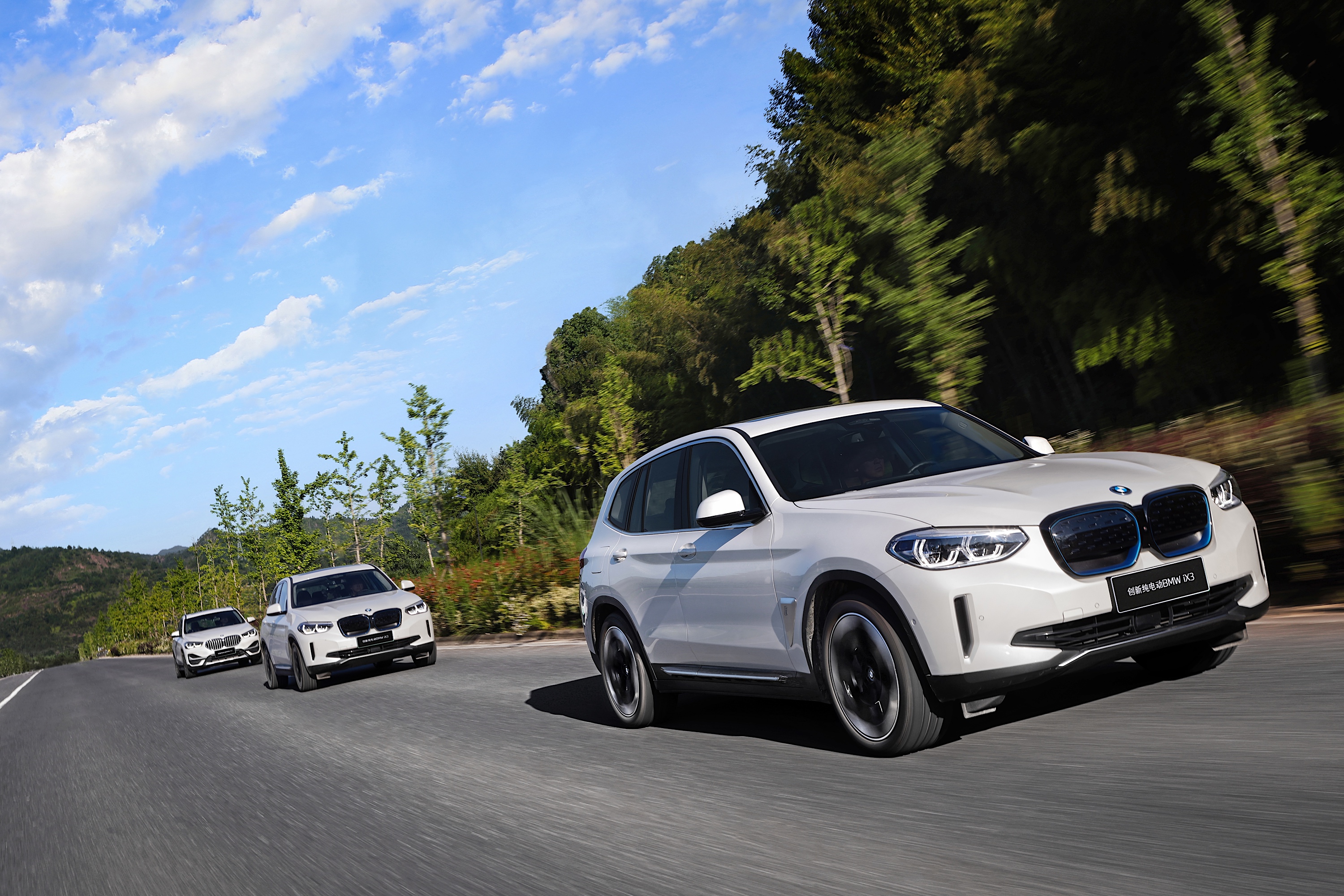
With the departure of i3 and i8, BMW i has entered a new phase of life. As the third model of the i series, the iX3 was officially launched in China in November last year. Compared to its rivals, Mercedes-Benz EQC and Audi e-tron, the initial pricing of the iX3 at 469,900-509,900 yuan showed BMW’s confidence in maintaining its high-end image. However, at the end of January this year, BMW conducted an official price cut on the iX3, bringing the price down to 399,900-439,900 yuan and offering cash compensation to existing owners.
BMW claims that its fifth-generation eDrive electric drive system will no longer use rare earth materials. Therefore, the rear-mounted motor on the iX3 is not the mainstream permanent magnet synchronous motor, but a “series-excited synchronous motor” with a maximum power of 210 kW, peak torque of 400 N·m, and can accelerate from 0 to 100 km/h in 6.8 seconds. For a rear-wheel-drive pure electric midsize SUV, achieving such acceleration with a single motor is considered quite impressive.
As for the battery, the iX3 uses Ningde Times’ 811 nickel-cobalt-manganese battery cells, with a capacity of 74 kWh and NEDC range of 500 km. In terms of range, it is better than the Mercedes-Benz EQC and Audi e-tron.
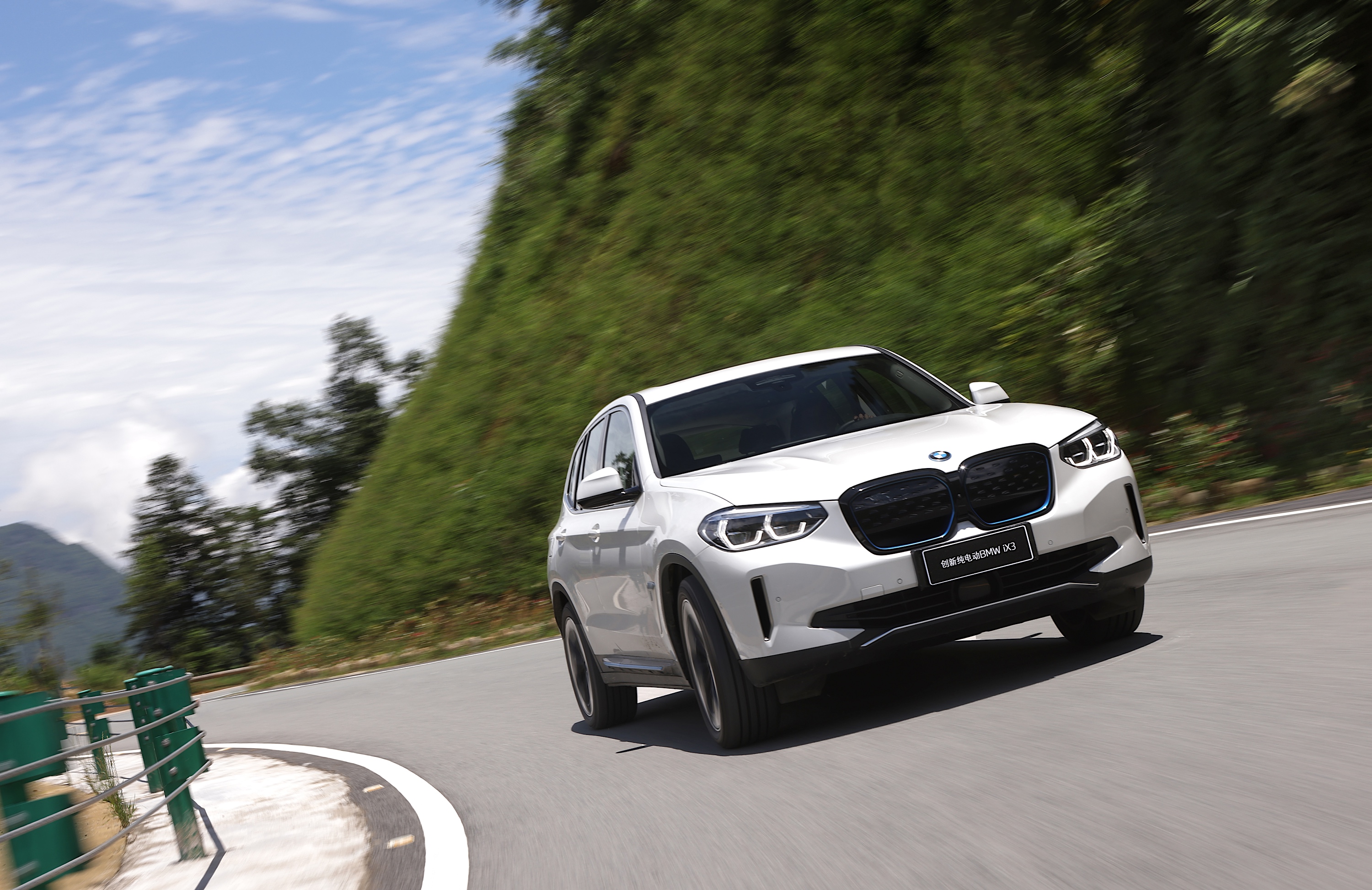
In terms of driving experience, the official definition of the iX3 is “still a pure BMW”. According to staff, the iX3’s body is 7 mm lower than the X3, and the battery pack’s placement at the bottom results in better suppression of body roll when cornering. The test drive route included highways, national roads, urban and rural roads, and mountain roads. I mainly drove on mountain roads in Lishui. With precise steering, the car quietly glided through the speed-restricted areas. When you step on the accelerator, you can hear the “BMW electric car sound simulation” produced by Hans Zimmer (Academy and Golden Globe Award Winner) stirring in your ears.
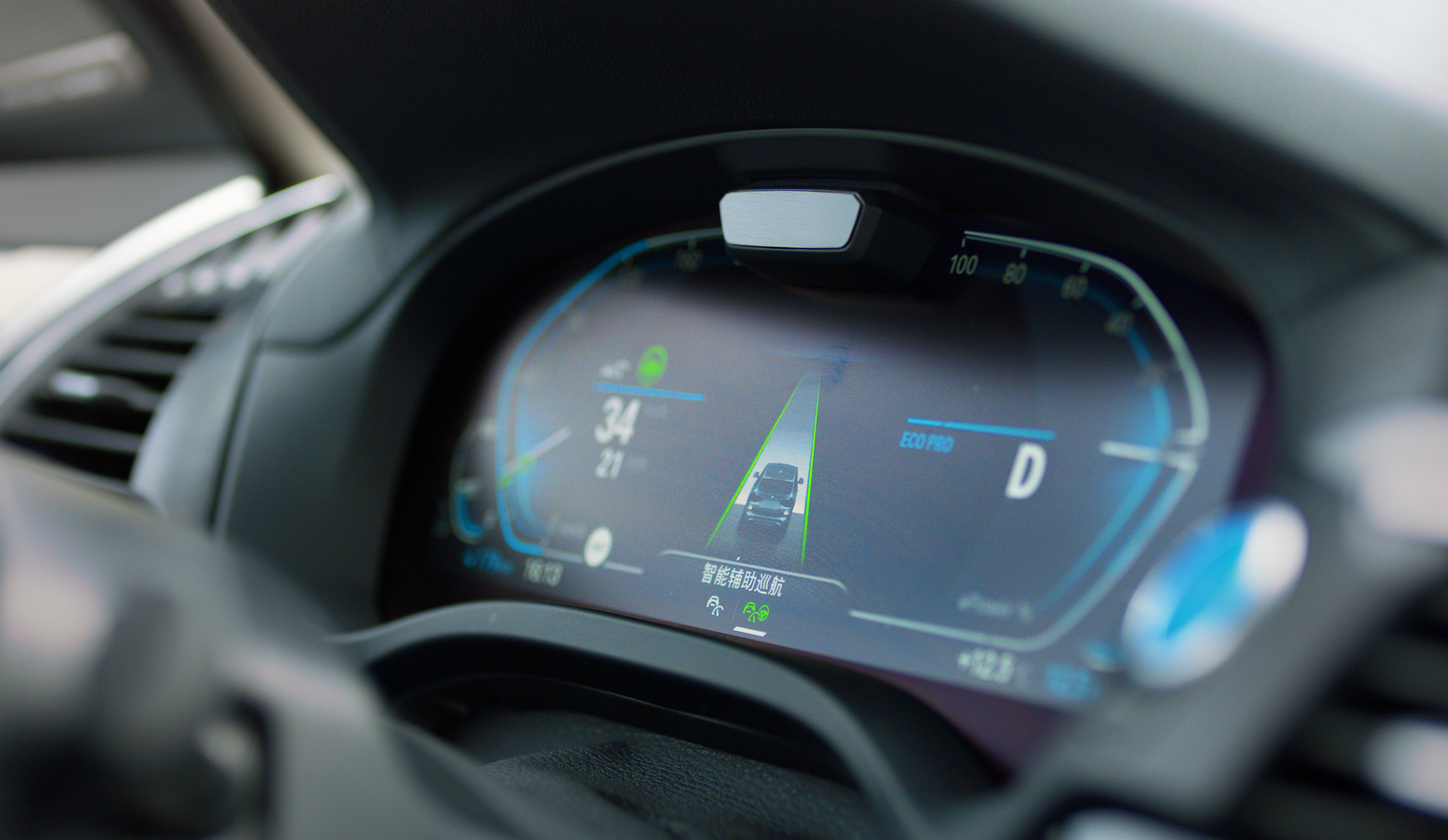 # About the advanced driving assistance
# About the advanced driving assistance
Many of the editors of the garage have introduced the advanced driving assistance, and the overall evaluation is very high, especially the linear acceleration when following a car at low speed, the ability to follow the trajectory of the front car to avoid obstacles, and the visual display. The iX3 is equipped with a front-facing tri-camera, 4 surround-view cameras, 5 millimeter-wave radars, and 12 ultrasonic radars, using computational power from Mobileye EyeQ4.
However, in this short experience of using the advanced driving assistance, I want to give credit to the capacitive induction steering wheel. Instead of needing to turn the steering wheel to make slight adjustments to the driving trajectory, it responds to touch with nearly no feeling, which is logical to use. But I found that this capacitive induction is too “sensitive” because it detects any touch and transfers driving control to you.
Under the premise of safety, I tried the limits of this system. After being prompted to take over, the advanced driving assistance icon turned yellow and continued to remind me until it turned red, and then the speed began to decrease, but the hazard lights did not turn on.
In addition, I also discovered an interesting feature, the adaptive kinetic energy recovery function. It uses the millimeter-wave radar to detect the driving trend of the front car, and by judging the distance between the front car and your car, it automatically initiates “brake energy recovery.”
Regarding the iDrive 7.0 infotainment system, BMW offers wireless Apple CarPlay functionality and integrates localized applications such as Tmall Genie, QQ Music, Himalaya Music, and Xigua Video, making content more diverse. It also supports gesture recognition operation.
The CLAR rear-wheel-drive “luxury” platform, iDrive 7.0, fifth-generation eDrive electric drive system, high-density 811 battery from Contemporary Amperex Technology, useful advanced driving assistance, these strengths surround the iX3 like a balanced bucket, fully demonstrating BMW’s sincerity in “oil-to-electricity” conversion. However, with new powerhouses controlling the flow of internet traffic, it is difficult to break away.
Conclusion
On the iX3, I saw that BMW has retained both Type-A and Type-C ports. Users who have had a Type-C phone for a few years believe that it’s not extreme enough and the car should have only Type-C ports, while users with old devices that use Type-A don’t understand the radicalism of Type-C and think that 5V 1A is good enough.
For example, the iX3 has almost the same appearance as the X3, but internally it is a pure electric car. Compared with the Mercedes-Benz EQC and Audi e-tron, the iX3 has a harmless appearance, but it has achieved higher sales than the former two. This is a concentrated manifestation of BMW’s nostalgia for old things and its aspirations for the future. Of course, these two are not contradictory.Although BMW lags behind the new forces in terms of traffic in the pure electric field, iX3 has successfully taken over the torch of BMW electrification from i3, and i4 and iX are waiting to take over. The degree to which this torch will burn will determine how long Pieter Zipse’s term as BMW CEO will be.
This article is a translation by ChatGPT of a Chinese report from 42HOW. If you have any questions about it, please email bd@42how.com.
